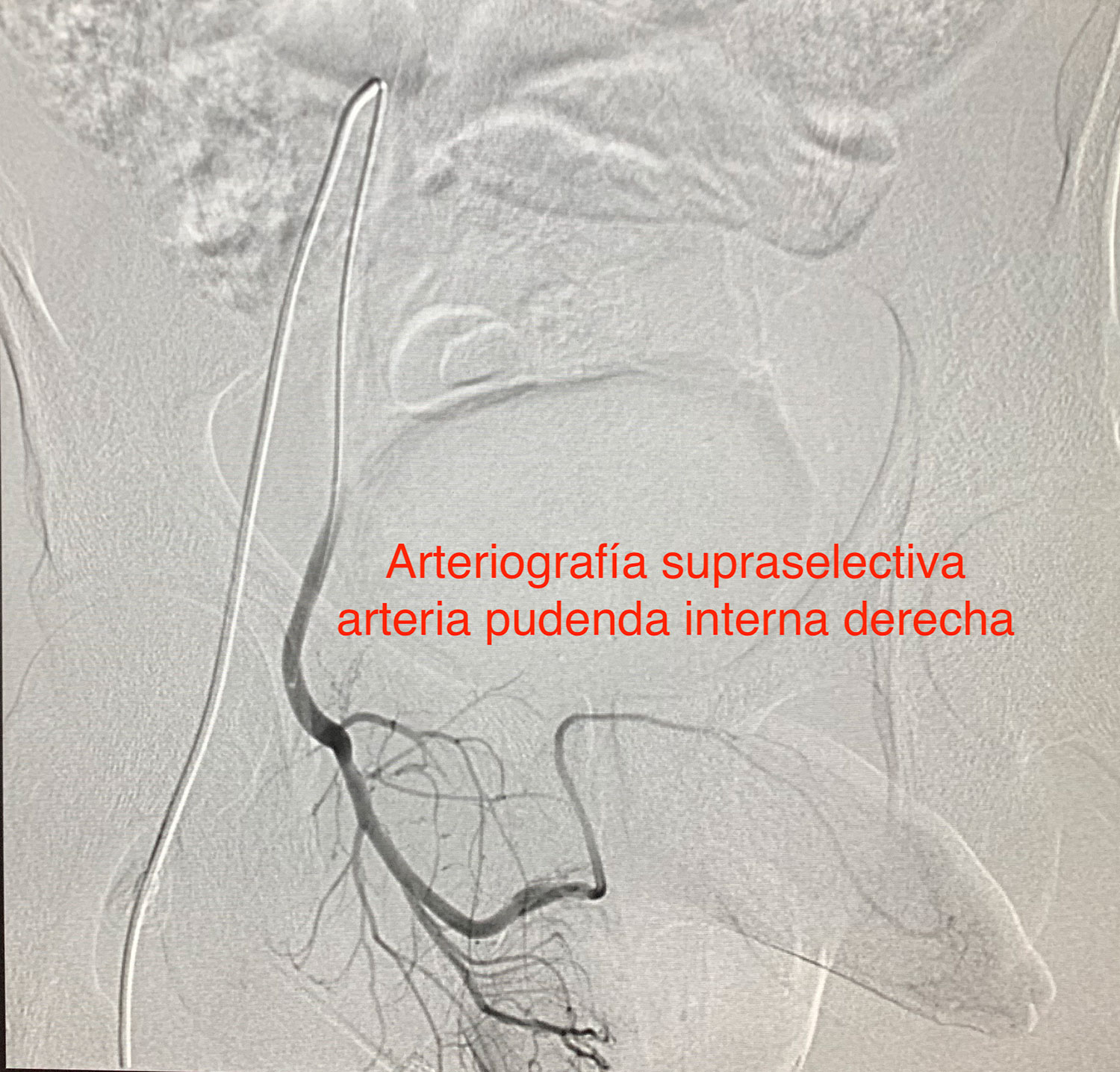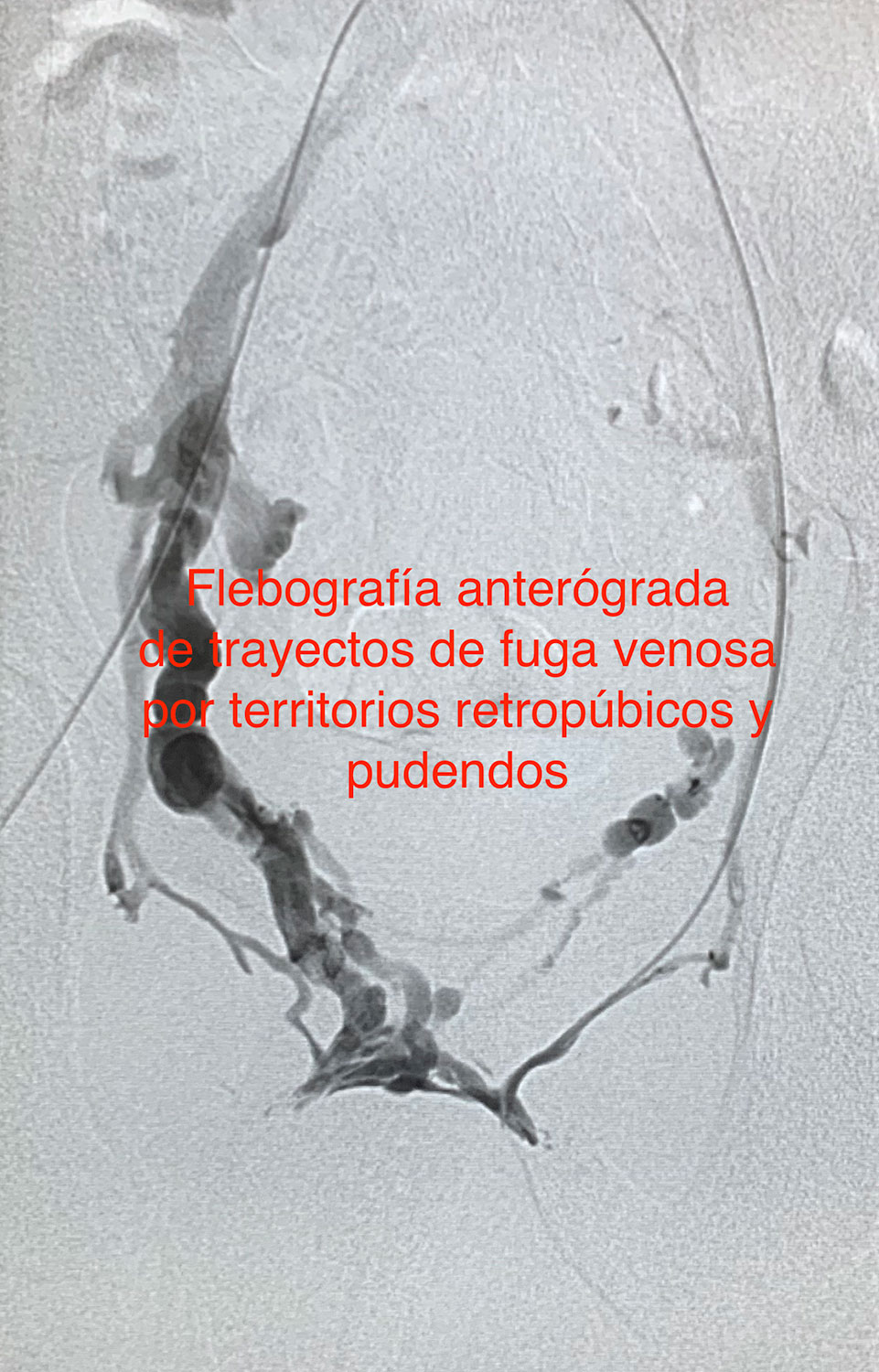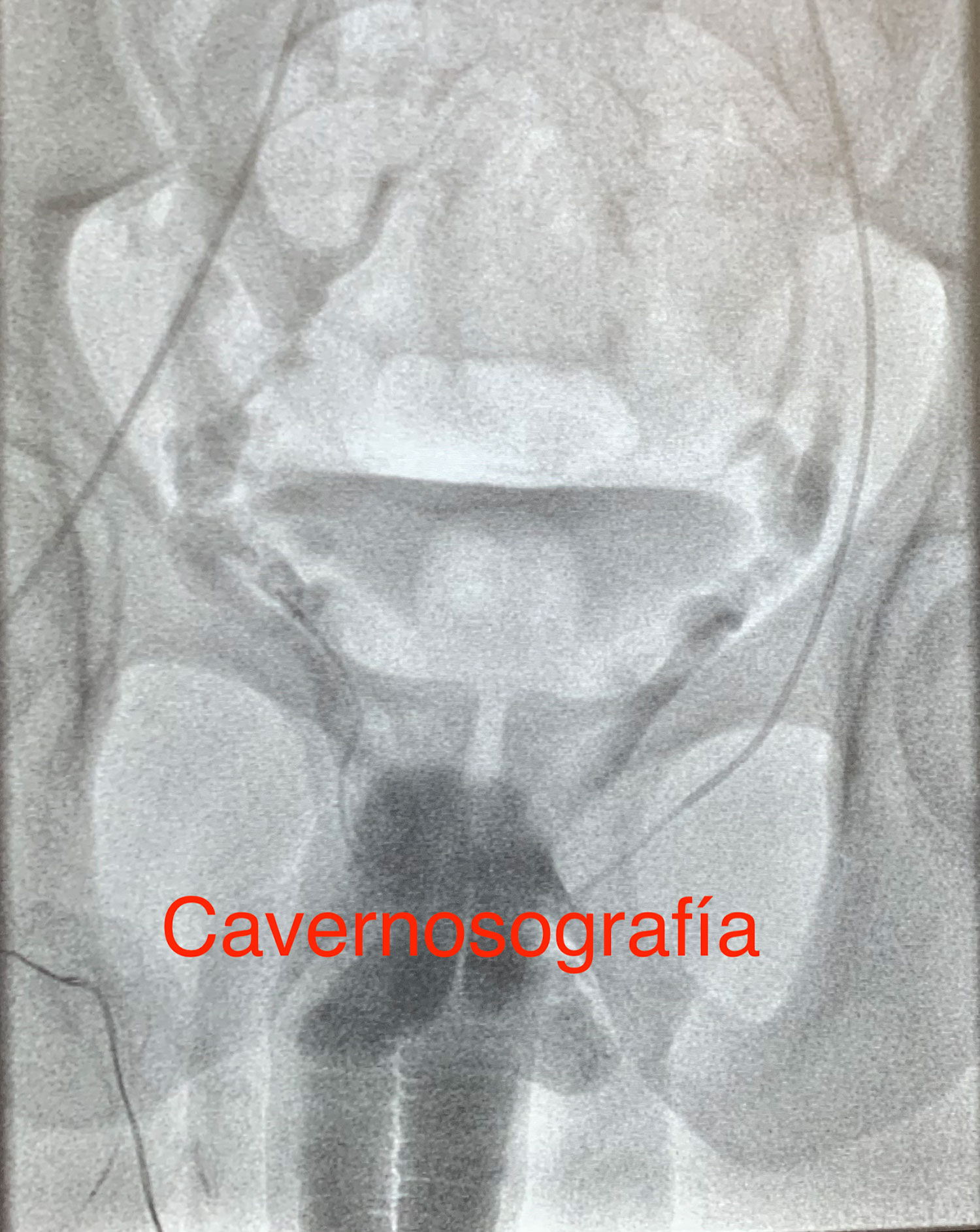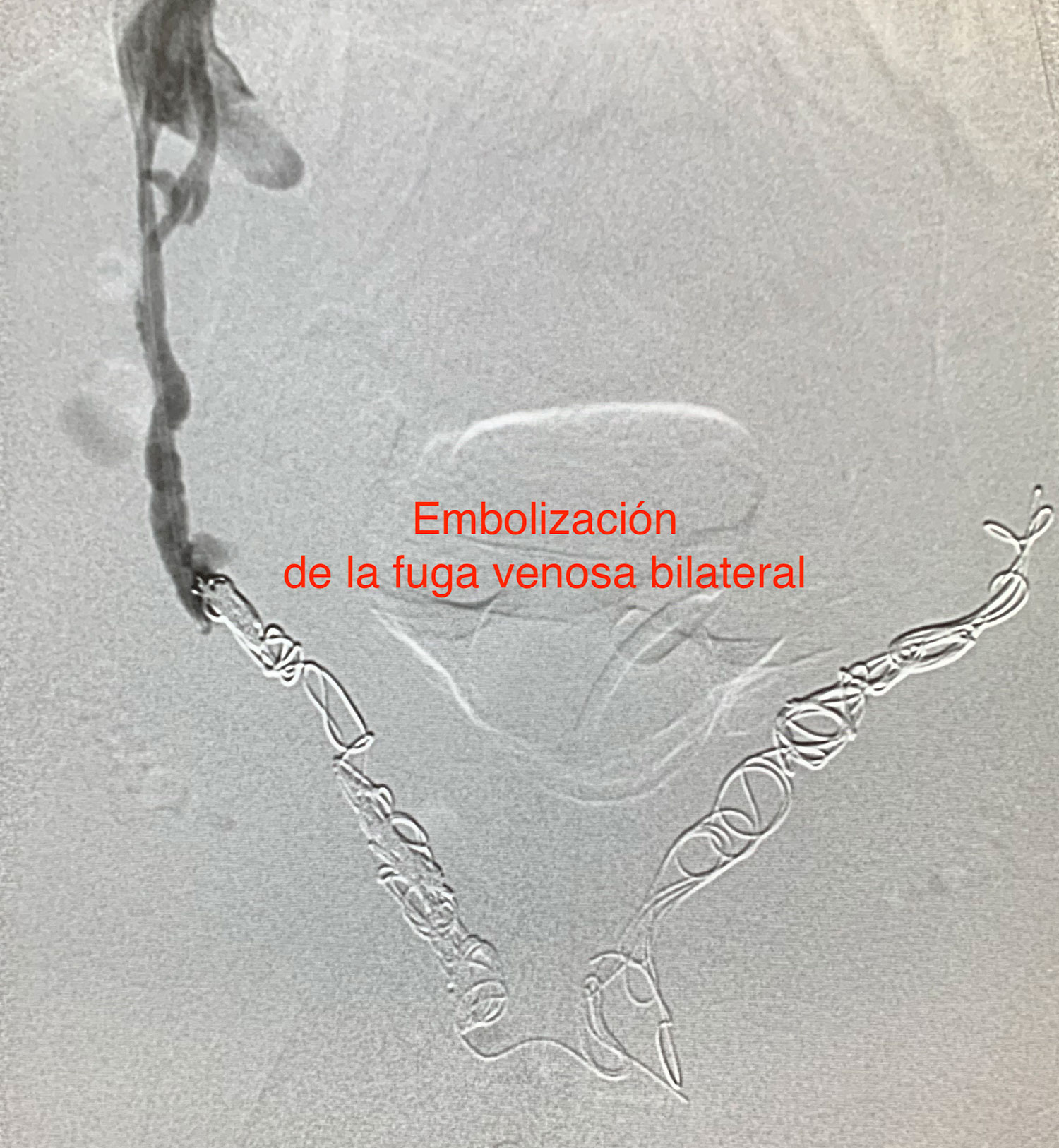This website uses cookies so that we can provide you with the best user experience possible. Cookie information is stored in your browser and performs functions such as recognising you when you return to our website and helping our team to understand which sections of the website you find most interesting and useful.
ERECTILE DYSFUNCTION DUE TO VASCULAR CAUSE
Internal pudendal arteriography
Phlebography venous leak
Cavernosography
Venous leak embolization
Description
How to know if there is a vascular cause after erectile dysfunction?
The inability to maintain a sufficient erection of the penis that allows a sexual act is called erectile dysfunction. This problem responds to many causes and the main specialist who deals with diagnosis and usually treatment is the Urologist.
If the Urologist detects that there may be a vascular cause, he or she can request a Doppler ultrasound of the penis with a prior vasodilator stimulation (intracavernous caverjet). There are certain parameters in the Doppler analysis that point to arterial insufficiency in the cavernous arteries, and this points to a vascular cause due to insufficient arrival of blood to the organ.
Other times on ultrasound, a “leak” of blood is detected earlier than desired from the penis and this is reflected in the diastolic Doppler wave in the cavernous arteries themselves. When there is an adequate sexual and / or chemical stimulus, the blood comes with power due to arterial vasodilation to the penis, and there are certain anatomical structures that prevent that blood from rushing away. These structures are the lacunar spaces of the corpora cavernosa, the subalbugineal venules, and the tunica albuginea. If these structures are unable to maintain the blood and allow it to “escape”, they cause erectile dysfunction due to venous leakage.
How do we treat erectile dysfunction from vascular causes?
When the Urologist refers the patient to assess a treatment for vascular causes, we can perform a supraselective arteriography of the internal pudendal artery and its branches directly in our intervention room, to assess the existence of the cavernous and bulbar arteries, as well as possible abnormalities. In addition, we can do a cavernosography to evaluate the presence of venous leaks, under the stimulation of vasodilators (caverjet).
In the case of arterial insufficiency, if it is of vessels of adequate size, dilations (angioplasties) can be made to increase the supply. If it is erectile dysfunction due to venous leak, what we do is a venous embolization of the retropubic veins and we seal the venous outflow paths to the internal pudendal vein. Microcoils and sealants such as Onyx or polidocanol foam are used.
All this type of treatment can be done by specialists in Angiology and Vascular Surgery, always in close collaboration with Urology, since the patient with erectile dysfunction must always be diagnosed and subsequently followed by the Urologist.






